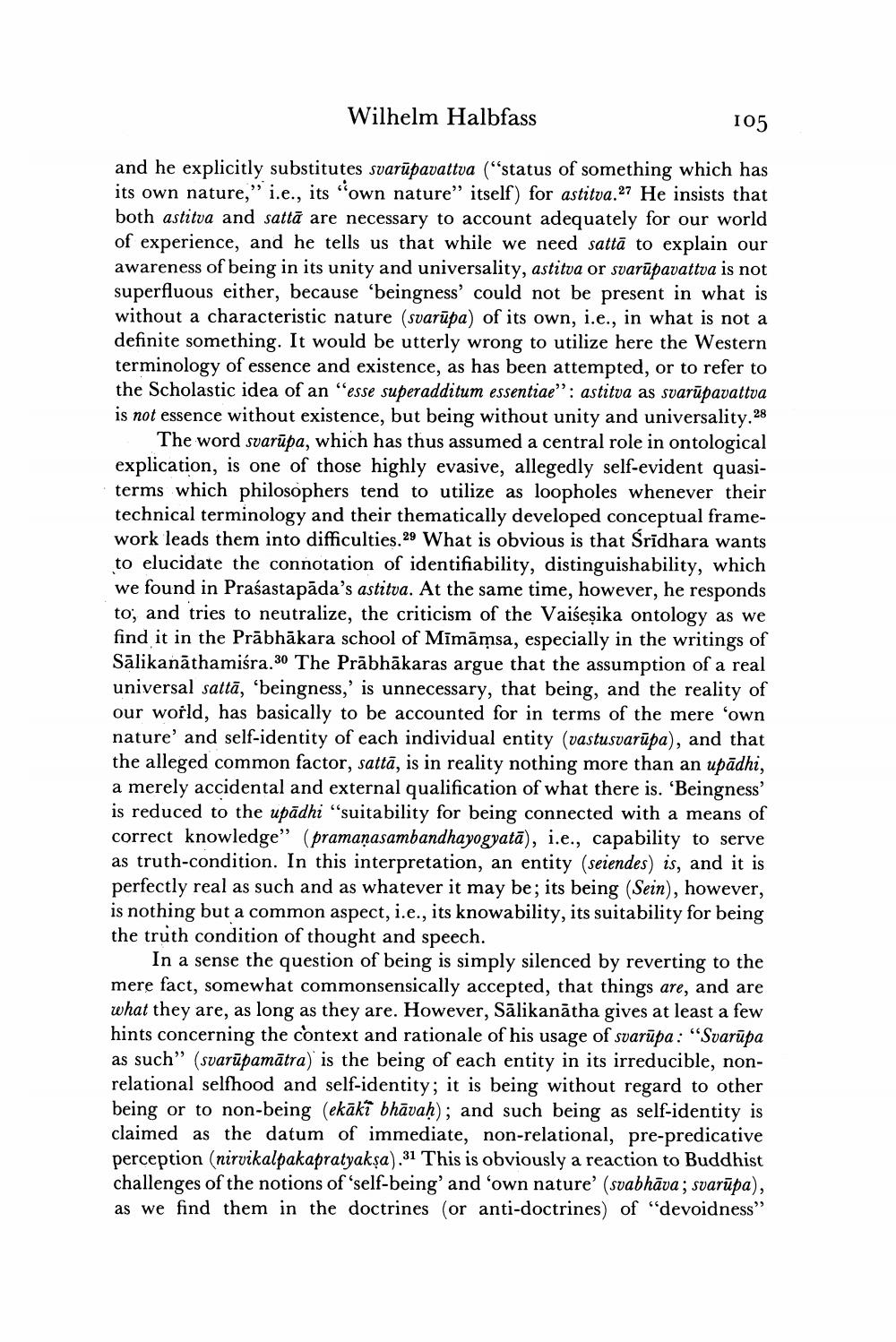________________
105
and he explicitly substitutes svarupavattva ("status of something which has its own nature," i.e., its "own nature" itself) for astitva. 27 He insists that both astitva and satta are necessary to account adequately for our world of experience, and he tells us that while we need satta to explain our awareness of being in its unity and universality, astitva or svarupavattva is not superfluous either, because 'beingness' could not be present in what is without a characteristic nature (svarupa) of its own, i.e., in what is not a definite something. It would be utterly wrong to utilize here the Western terminology of essence and existence, as has been attempted, or to refer to the Scholastic idea of an "esse superadditum essentiae": astitva as svarupavattva is not essence without existence, but being without unity and universality, 28 The word svarupa, which has thus assumed a central role in ontological explication, is one of those highly evasive, allegedly self-evident quasiterms which philosophers tend to utilize as loopholes whenever their technical terminology and their thematically developed conceptual framework leads them into difficulties.29 What is obvious is that Śrīdhara wants to elucidate the connotation of identifiability, distinguishability, which we found in Prasastapāda's astitva. At the same time, however, he responds to, and tries to neutralize, the criticism of the Vaiśeșika ontology as we find it in the Prabhakara school of Mīmāmsa, especially in the writings of Sālikanathamiśra.30 The Prabhakaras argue that the assumption of a real universal sattā, 'beingness,' is unnecessary, that being, and the reality of our world, has basically to be accounted for in terms of the mere 'own nature' and self-identity of each individual entity (vastusvarupa), and that the alleged common factor, satta, is in reality nothing more than an upādhi, a merely accidental and external qualification of what there is. 'Beingness' is reduced to the upadhi "suitability for being connected with a means of correct knowledge" (pramanasambandhayogyatā), i.e., capability to serve as truth-condition. In this interpretation, an entity (seiendes) is, and it is perfectly real as such and as whatever it may be; its being (Sein), however, is nothing but a common aspect, i.e., its knowability, its suitability for being the truth condition of thought and speech.
In a sense the question of being is simply silenced by reverting to the mere fact, somewhat commonsensically accepted, that things are, and are what they are, as long as they are. However, Sālikanatha gives at least a few hints concerning the context and rationale of his usage of svarupa: "Svarupa as such" (svarūpamātra) is the being of each entity in its irreducible, nonrelational selfhood and self-identity; it is being without regard to other being or to non-being (ekāki bhāvaḥ); and such being as self-identity is claimed as the datum of immediate, non-relational, pre-predicative perception (nirvikalpakapratyakṣa).31 This is obviously a reaction to Buddhist challenges of the notions of 'self-being' and 'own nature' (svabhāva; svarūpa), as we find them in the doctrines (or anti-doctrines) of "devoidness"
Wilhelm Halbfass




